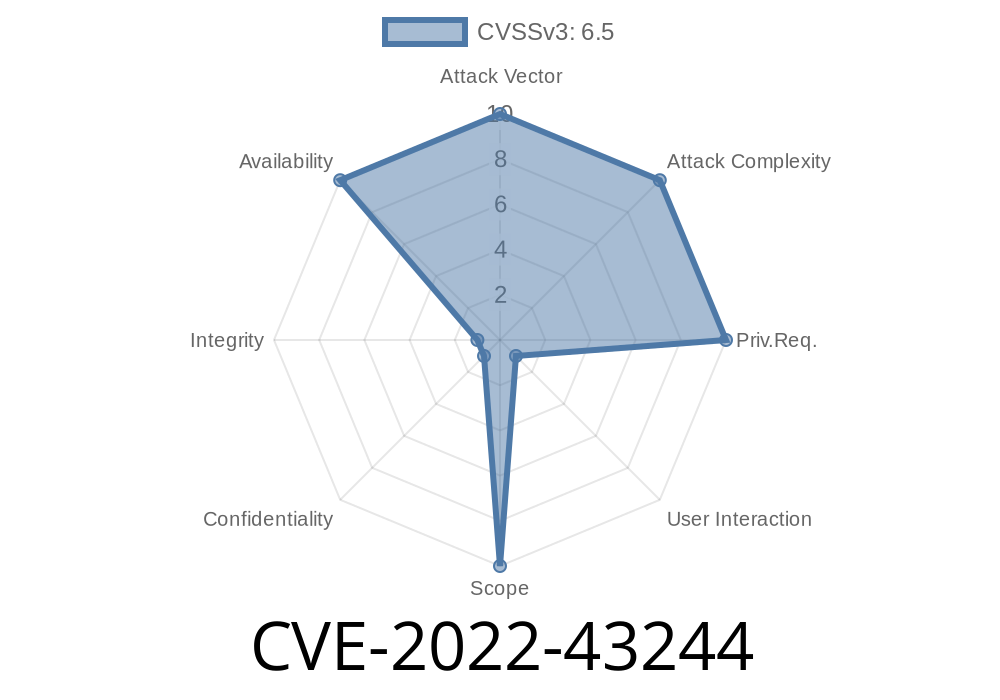A recent discovery made by security researchers has found a security vulnerability in the Libde265 library, specifically version v1..8. The vulnerability is a heap-buffer-overflow, which could potentially allow attackers to cause a Denial of Service (DoS) via a specially crafted video file. In this post, we will explore the specifics of this vulnerability, along with code snippets showcasing the issue and potential mitigation measures.
Vulnerability Details
The vulnerability in question is assigned the identifier CVE-2022-43244. It stems from the function put_qpel_fallback in the file fallback-motion.cc within the Libde265 library. The Libde265 library is an open-source H.265/HEVC video codec implementation that allows developers to build video applications with support for this highly efficient video compression standard.
Exploitation of this vulnerability can cause heap-buffer-overflow when processing a maliciously crafted video file, opening the door for a potential DoS attack. A heap-buffer-overflow vulnerability occurs when a memory location is accessed that exceeds its allocated boundaries, which could lead to undefined behavior, crashes, or potential code execution by an attacker.
The following code snippet from fallback-motion.cc shows the function where the vulnerability exists
template <class pixel_t>
void put_qpel_fallback(unsigned short* dst, int dst_stride, const short* src, int src_stride, int width, int height, int nPel)
{
for (int y=; y<height; y++)
{
for (int x=; x<width; x++)
{
dst[x] = Clip1Y(src[x] + 64);
}
src += src_stride;
dst += dst_stride;
}
}
The function put_qpel_fallback takes several input parameters, such as destination memory location (dst), source memory location (src), width, and height. It then adds an offset value of 64 to the src buffer and clips the results within the range of valid pixel values. However, it is possible to craft a video file that could manipulate these parameters and cause an out-of-bounds write on the dst buffer, leading to a heap-buffer-overflow vulnerability.
Original References
For more information about the multiple security issues discovered in Libde265 v1..8, please refer to the following resources:
1. CVE-2022-43244 Mitre Description
2. Libde265 GitHub Repository
Potential Exploitation and Mitigations
To exploit this vulnerability, an attacker would need to craft a malicious video file that triggers the heap-buffer-overflow condition and then convince the target user or application to process the video file using a vulnerable version of the Libde265 library.
In order to mitigate the risk of exploitation, developers should update their applications to use a patched or latest version of Libde265 that addresses the vulnerability. Additionally, users of such applications should be cautious when opening video files from unknown sources and ensure they are using applications built with the latest security updates.
Conclusion
In conclusion, the CVE-2022-43244 vulnerability discovered in Libde265 v1..8 highlights the necessity of reviewing and updating the software applications that we rely on, both as developers and users. Properly testing and patching software against security vulnerabilities is an important aspect of keeping ourselves safe from potential attacks in the interconnected digital world.
Timeline
Published on: 11/02/2022 14:15:00 UTC
Last modified on: 02/27/2023 15:25:00 UTC
